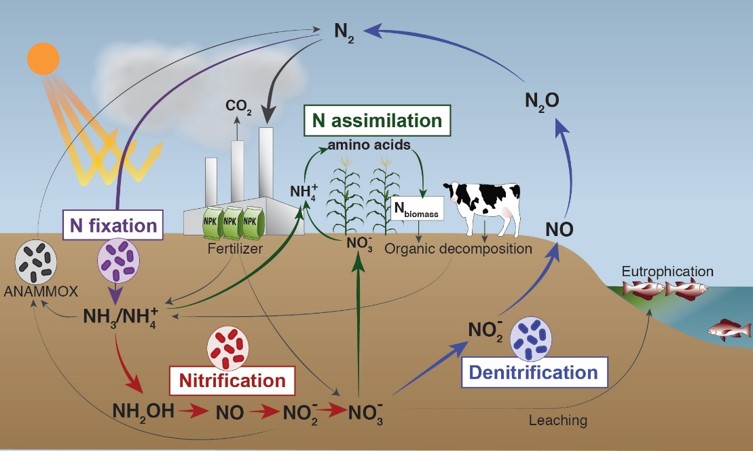
|
|
The Nitrogen Cycle The main processes in the nitrogen cycle. N2 is reduced to NH3 via biological or industrial nitrogen fixation, providing nitrogen
fertilizer for plants. However, of the nitrogen added to fields - most of which is in the form of NH3 and NO3- - only 30-50% is taken up by plants,
the remainder being metabolized by soil microbes in processes with detrimental environmental impacts. The first of these processes, nitrification, refers to the biological oxidation
of NH3 to NO2- and NO3-, which have low retention in soil and pollute the waterways, leading to downstream eutrophication
and ultimately the 'dead zones' (low oxygen zones) in coastal waters, for example the Gulf of Mexico. In a second process, denitrification, NO2- and NO3-
undergo stepwise reduction to N2O and N2. Significant amounts of the N2O produced in this process escape into the atmosphere, contributing to
climate change and ozone destruction. |
| OPEN POSITIONS |
HOME |
RESEARCH |
METHODS |
PUBLICATIONS |
CV |
LECTURES |
GROUP MEMBERS |

